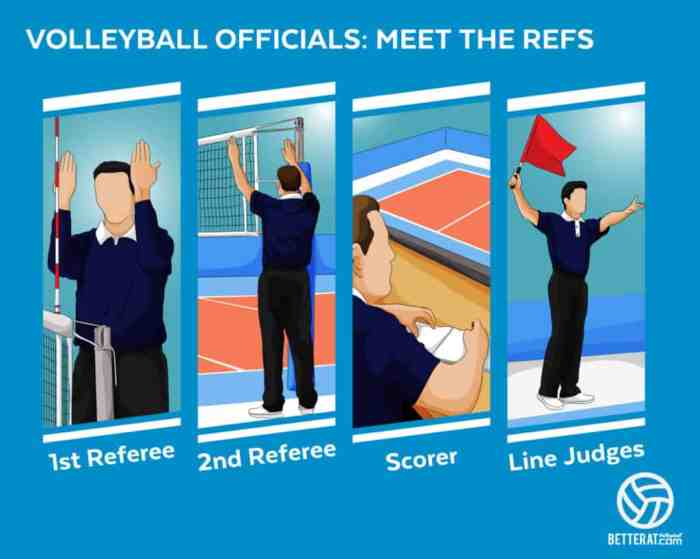The scorer receives a line up, an integral aspect of sports, holds immense importance in shaping the game’s dynamics. This concept has undergone significant evolution throughout history, influenced by societal norms and technological advancements. Its strategic use by coaches and players alike has often determined the outcome of matches, sparking controversies and ethical debates.
From the early days of organized sports to the modern era, line ups have played a crucial role in establishing fairness, maintaining order, and showcasing individual skills. They have also become a symbol of team unity and a reflection of cultural values.
This article delves into the multifaceted world of line ups, exploring their mechanisms, historical evolution, cultural significance, strategic use, controversies, and potential future.
Scoring Mechanisms

In sports, line ups refer to the specific formation or arrangement of players on the field or court. The scoring mechanisms associated with line ups vary depending on the sport and the specific rules and regulations governing it.
Generally, line ups are used to optimize team performance and strategy. By positioning players in certain formations, teams can control the pace and flow of the game, create scoring opportunities, and defend against opposing teams.
Different Ways to Receive a Line Up
There are various ways a player can receive a line up:
- Coach’s Decision:In most sports, the coach or manager is responsible for determining the line up. They consider factors such as player skills, fitness, and team strategy.
- Player Rotation:Some sports, such as basketball and soccer, employ player rotation systems. This involves substituting players in and out of the game at regular intervals to ensure fairness and prevent fatigue.
- Positional Play:In sports like baseball and hockey, players are assigned specific positions on the field or ice. The line up reflects the designated positions for each player.
Rules and Regulations
The rules and regulations surrounding line ups vary depending on the sport. Some common guidelines include:
- Number of Players:The line up must adhere to the specified number of players allowed on the field or court.
- Player Positions:In sports where players have designated positions, the line up must reflect the correct positioning.
- Substitution Limits:Some sports impose limits on the number of substitutions that can be made during a game.
- Fair Play:Line ups should be determined fairly and without bias.
Examples of Line Ups, The scorer receives a line up
Line ups are used in various sports, including:
- Baseball:The batting order and defensive positions.
- Basketball:The starting five players and subsequent substitutions.
- Soccer:The formation and positioning of players on the field.
- Hockey:The lines and defensive pairings.
- Tennis:The order of players in a match.
Historical Evolution of Line Ups: The Scorer Receives A Line Up

Line ups have been an integral part of sports since the earliest days of organized competition. The first recorded use of a line up in a sporting context was in the 1840s, when cricket teams began to field 11 players in a specific order.
This practice quickly spread to other sports, such as baseball and soccer.Over the years, the way that line ups are determined has evolved considerably. In the early days, line ups were often chosen based on the players’ experience and reputation.
However, as sports became more competitive, teams began to use more scientific methods to determine their line ups. Today, many teams use computer models and statistical analysis to help them make their line up decisions.The impact of technology on line ups has been significant.
In the past, teams had to rely on scouts and their own knowledge of the opposition to make their line up decisions. However, today, teams have access to a wealth of data and information that can help them make better decisions.
This has led to a more scientific approach to line ups, and it has also helped to level the playing field between teams.
Cultural Significance of Line Ups

Line ups hold cultural significance in various societies, reflecting social norms, values, and shaping sporting identities.Line ups often symbolize equality and fairness. They ensure everyone has an equal chance to participate, regardless of status or ability. This principle of equal opportunity is deeply embedded in many cultures and is reflected in the use of line ups for various activities, from accessing public services to distributing resources.
Line Ups and Social Values
Line ups also embody the values of patience, discipline, and respect. Waiting in line requires patience and self-control, fostering a sense of order and respect for others. In many cultures, line ups are seen as a way to demonstrate these virtues, reinforcing social harmony and cooperation.
Line Ups and Sporting Identities
In the realm of sports, line ups play a crucial role in shaping team identities. The starting line up represents the team’s best players and sets the tone for the game. It reflects the team’s strategy, strengths, and weaknesses. Fans often identify strongly with their team’s line up, seeing it as a symbol of their team’s values and aspirations.
Strategic Use of Line Ups
Line ups play a crucial role in sports, offering coaches and players an opportunity to gain a strategic advantage. By carefully selecting and positioning players, teams can exploit weaknesses in their opponents’ line ups and maximize their own strengths.
Positioning for Success
One of the key strategies in line up selection is positioning players in roles that complement their skills and abilities. For example, in basketball, a team may choose to start a tall center to dominate the paint and create scoring opportunities inside.
Similarly, in soccer, a team may opt for a defensive-minded midfielder to disrupt the opposition’s attack and win back possession.
Countering Opponents
Another strategic use of line ups involves countering the strengths of opposing teams. For instance, in baseball, a team may choose to start a left-handed pitcher against a line up that includes several right-handed batters. This gives the pitcher an advantage, as right-handed batters typically have difficulty hitting left-handed pitches.
Similarly, in hockey, a team may choose to deploy a physical line up against a team known for its finesse and speed.
The scorer receives a line up, which can be a challenging task. But fear not, for help is at hand. “Give Me Liberty Seagull Vol. 2” is a comprehensive guide that provides all the information you need to know about the scorer receives a line up.
From the basics to the more advanced techniques, this guide has got you covered.
Adapting to Situations
Effective line up management also requires the ability to adapt to changing situations during a game. Coaches may make substitutions or adjust their line ups to respond to injuries, player fatigue, or changes in the game’s tempo. For example, in football, a team may switch to a more defensive line up if they are protecting a lead in the second half.
Examples of Success and Failure
Successful line up strategies have played a significant role in many famous victories. For instance, in the 2019 FIFA Women’s World Cup, the United States team used a dynamic and adaptable line up to overcome their opponents and claim the championship.
Conversely, poor line up choices can lead to disappointing results. In the 2014 FIFA World Cup, the Spanish team was criticized for their rigid and inflexible line up, which contributed to their early exit from the tournament.
Controversies Surrounding Line Ups

Line ups, while essential for organizing teams and competitions, have also sparked controversies in the world of sports. These controversies often stem from ethical and practical concerns.
Ethical Issues
One ethical issue surrounding line ups is the potential for bias and discrimination. In some cases, line ups may be influenced by factors such as race, gender, or socioeconomic status, which can lead to unfair treatment of certain players.
Practical Issues
Practical issues with line ups can arise when players are injured, suspended, or otherwise unavailable. This can lead to difficult decisions about who should fill in, which can have a significant impact on the outcome of a game.
Controversial Line Up Decisions
Some notable examples of controversial line up decisions include:
- The decision to bench star player LeBron James in the final minutes of a crucial NBA game.
- The decision to start an inexperienced player in a high-stakes match.
- The decision to drop a veteran player in favor of a younger, less experienced player.
These decisions often spark heated debates among fans, players, and coaches, highlighting the complex and often controversial nature of line ups in sports.
Future of Line Ups

The future of line ups in sports is uncertain, but there are several potential trends that could shape their evolution. One trend is the increasing use of data and analytics to inform decision-making. This could lead to more sophisticated and data-driven approaches to line up construction, with teams using statistical models to identify the optimal combinations of players.
Another trend is the growing popularity of player tracking technology. This technology can provide teams with detailed information about each player’s performance, including their speed, acceleration, and distance covered. This information could be used to create more personalized line ups that are tailored to each player’s strengths and weaknesses.
Impact of New Technologies
The development of new technologies could have a significant impact on the future of line ups. For example, the use of virtual reality (VR) could allow teams to simulate different line ups and see how they perform in different scenarios.
This could help teams make more informed decisions about their line ups and improve their chances of success.
Role of Line Ups
Despite the potential impact of new technologies, it is likely that line ups will continue to play an important role in the future of sports. Line ups provide teams with a way to structure their teams and optimize their performance.
They also give fans a way to connect with their favorite players and teams.
FAQ Summary
What is the primary purpose of a line up?
A line up establishes the order in which players participate in a game, ensuring fairness and maintaining the flow of play.
How have line ups evolved over time?
Line ups have undergone significant changes throughout history, influenced by rule modifications, technological advancements, and societal norms.
What are the ethical considerations surrounding line ups?
Ethical concerns arise when line ups are manipulated for unfair advantages or when they perpetuate biases and discrimination.